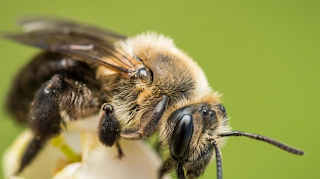New bee species discovered in Pennsylvania
Penn State University announced that new bee species have been discovered in Pennsylvania.
According to a news release from Penn State, the discovery was the result of a study by 26 trained community scientists.
The Penn State-trained scientists were researching patterns of bee biodiversity and their abundance at a time when the pollinators are declining nationwide.
The study was published in the Annals of the Entomological Society of America, which explains the methodology of the project and the purposes of platforms like iNaturalist, a public photo-bassed documentation app, to track bee diversity and history.
Between Aug. 2021 and Dec. 2022, the participants collected 9,062 bees, which were identified to species, stored in museum collections and the data were added to public databases, Penn State said.
The study found that trained participants documented over twice as much biodiversity and novel baseline natural history data as the iNaturalist users, according to Penn State.
The study also shows the importance of establishing partnerships with communities and protecting pollinators like bees.
“This project showcases how Pennsylvanians are engaging in community science to serve their communities and the commonwealth,” said Nash Turley, a postdoctoral scholar at Penn State and lead author on the study. “The effectiveness of this collaboration suggests it could serve as a model for other programs to further develop volunteer-based opportunities and contribute to future efforts to better understand and protect our state’s biodiversity.”
“More than 80 percent of flowering plants rely on pollinators like bees to reproduce,” Pennsylvania Agriculture Secretary Russell Redding said in the Penn State article. “Apples, peaches, berries, pumpkins, grapes and many other high-value Pennsylvania crops depend on bees, as does our $4.1 billion nursery and landscaping industry. In so many of our communities, our jobs and livelihoods revolve around producing foods that rely on pollination."
"The data in this report illustrate the value of citizen science in making sure we can protect pollinators and produce food in the future," Redding said.
The work was supported by the state Department of Agriculture, the United States Department of Agriculture National Institute of Food and Agriculture Hatch Act funds, a 2022 SpecialtyCrops Block Grant and a Science-To-Practice grant from Penn State's College of Agricultural Sciences.

